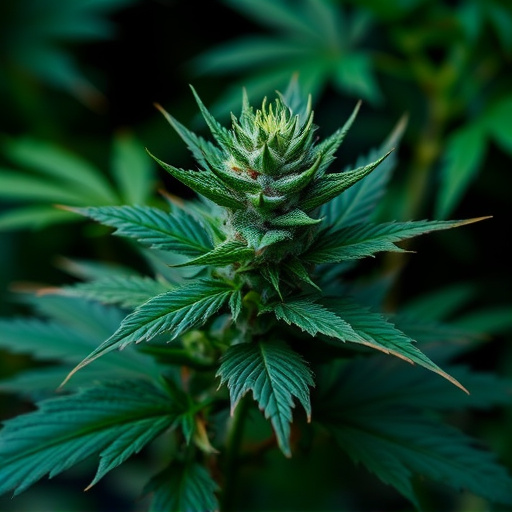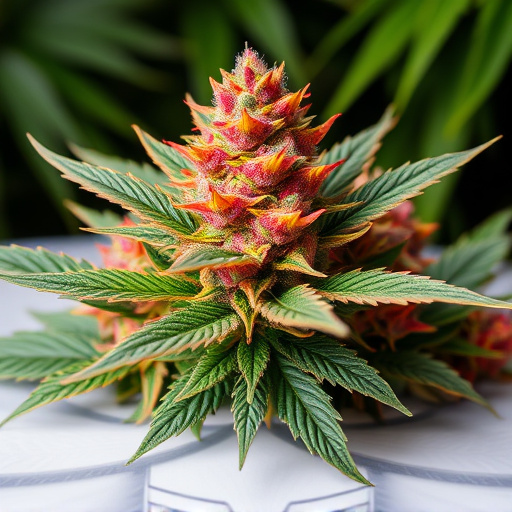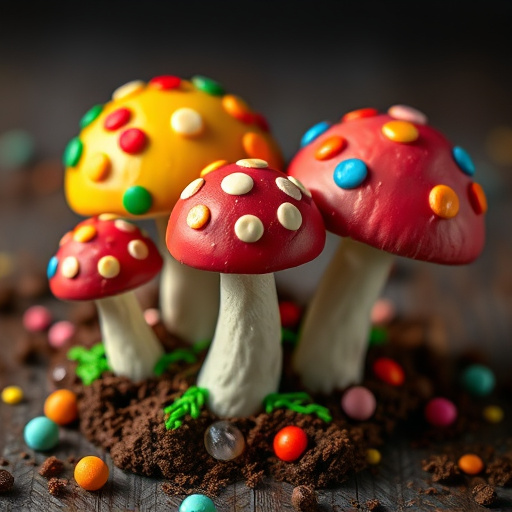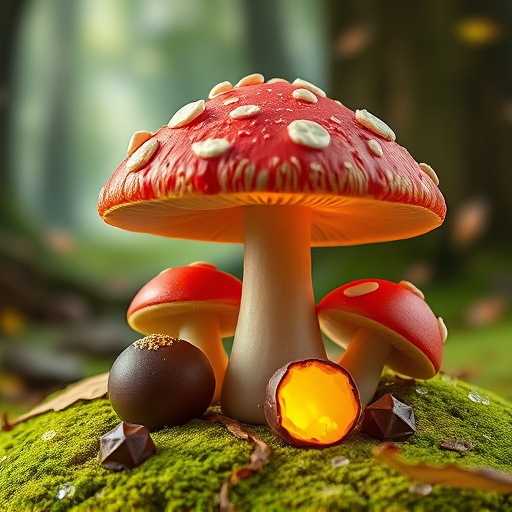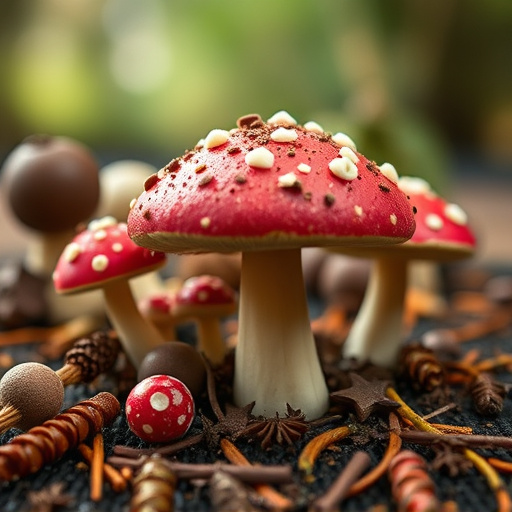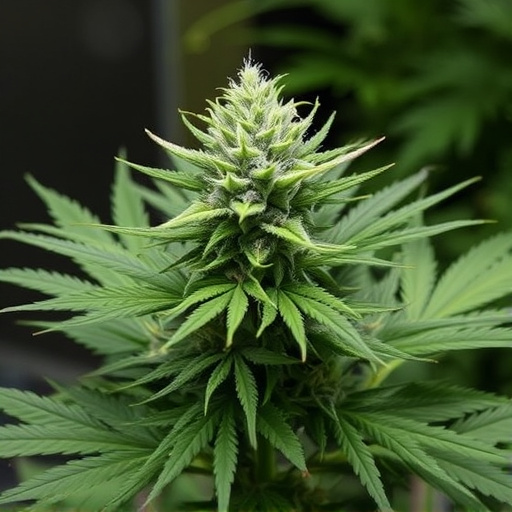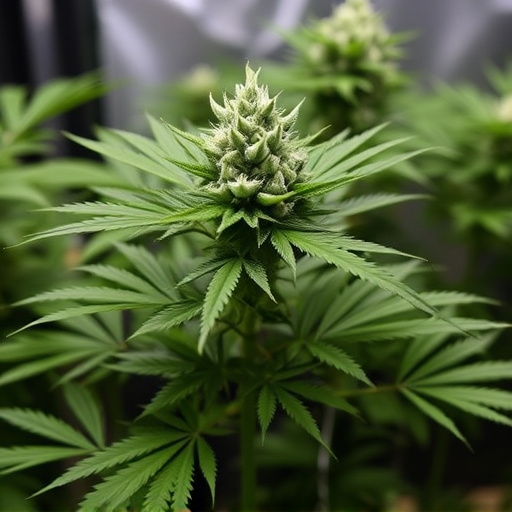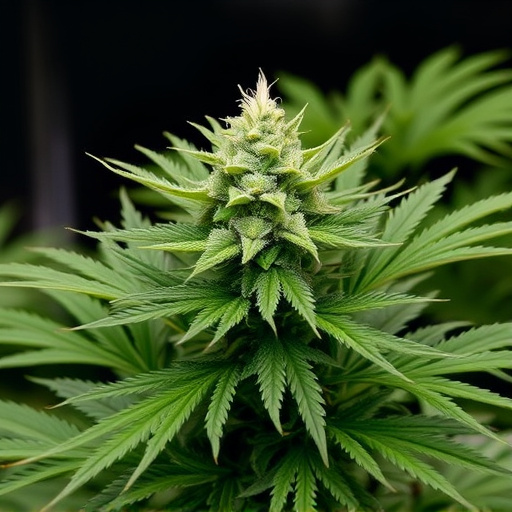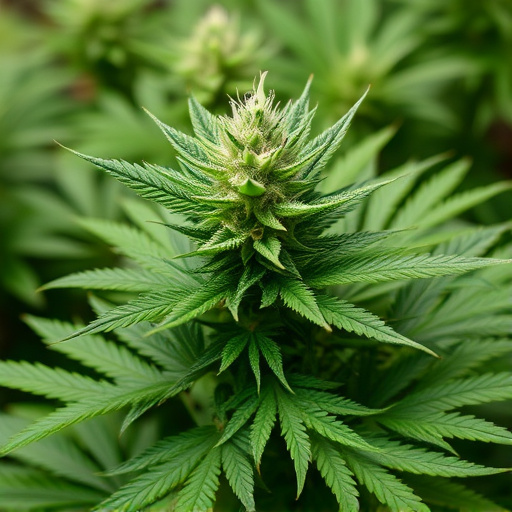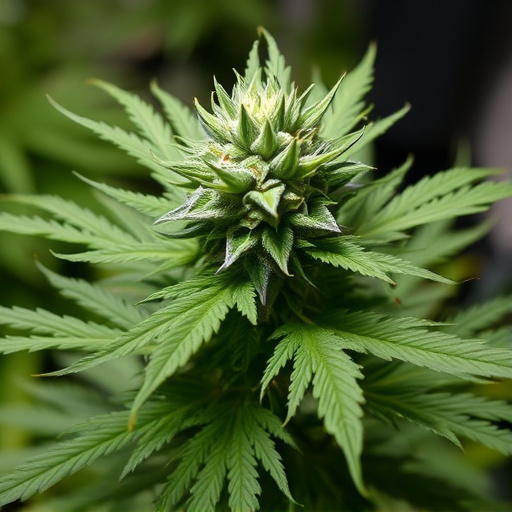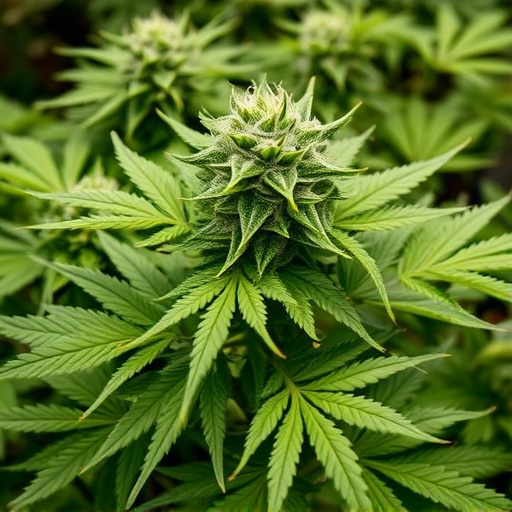Cultivating high-quality medical cannabis at home is accessible with the right strain choices and proper growing techniques. The text recommends 'Autoflowering' and 'Fast-Flowering' hybrids, highlighting 'Blue Dream', 'Granddaddy Purple', and 'Cherry Pie' as easy strains for beginners seeking specific medical benefits. Understanding the plant's life cycle is key; growers should start with simple varieties like Northern Lights or Girl Scout Cookies, focusing on light, nutrients, and darkness duration during vegetative and flowering stages, respectively. Curing harvested flowers enhances flavor and potency.
Cannabis flowers hold immense potential for medical applications, offering a range of therapeutic benefits. This article explores how these delicate blooms, with their diverse compounds, provide natural relief for various ailments. We’ll guide you through the process, starting with an understanding of cannabis genetics and its unique properties. Then, discover the easiest cannabis strains to grow at home, followed by practical tips on cultivation and harvesting techniques to maximize medicinal yield.
- Understanding Cannabis Flowers and Their Medical Properties
- The Easiest Cannabis Strains for Growing at Home
- How to Cultivate and Harvest for Optimal Medical Benefits
Understanding Cannabis Flowers and Their Medical Properties

Cannabis flowers, also known as buds or floral clusters, are the most recognizable and potent parts of the cannabis plant, containing a rich array of chemical compounds that offer various medical benefits. These flowers are not only visually striking but also house the majority of the plant’s therapeutic properties due to their high concentration of cannabinoids like THC and CBD, terpenes, and flavonoids.
Understanding the unique characteristics of different cannabis strains is key to unlocking their medicinal potential. Among the easiest cannabis strains to grow for medical purposes are those with high CBD content, as they often have more subtle psychoactive effects compared to strains heavy in THC. This makes them suitable for patients seeking relief from inflammation, anxiety, and specific pain conditions without the intense “high.” Such strains offer a gentle yet effective way to harness the plant’s medicinal properties, making them popular choices for those new to cannabis or looking for alternative treatment options.
The Easiest Cannabis Strains for Growing at Home
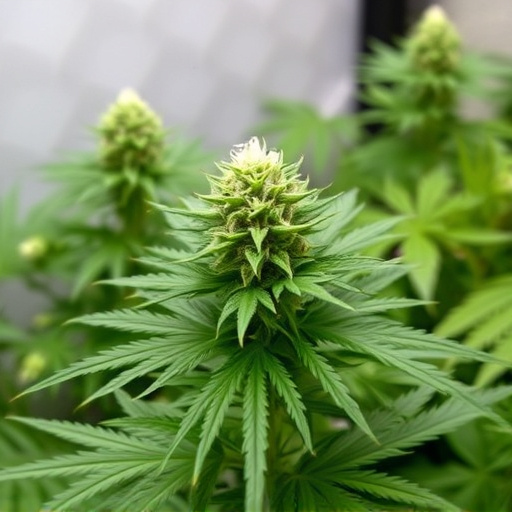
For those interested in cultivating their own cannabis at home, selecting the right strain is a crucial first step. Among the easiest cannabis strains for growing indoors or outdoors are those known for their resilience and rapid flowering times. Varieties like ‘Autoflowering’ or ‘Fast-Flowering’ hybrids are popular choices due to their adaptability and low maintenance requirements. These plants often have robust root systems that make them less susceptible to common growing issues, allowing even novice cultivators to achieve good yields.
Some of the easiest cannabis strains include ‘Blue Dream’, known for its balanced Sativa/Indica profile and pleasant aroma; ‘Granddaddy Purple’, a Indica-dominant strain with potent relaxing effects; and ‘Cherry Pie’, a hybrid that offers a sweet, fruity flavor and a calm yet energizing high. Each of these strains is relatively low maintenance, making them ideal for home growers looking to reap the medical benefits of cannabis without an extensive learning curve.
How to Cultivate and Harvest for Optimal Medical Benefits

To cultivate and harvest cannabis for optimal medical benefits, understanding the plant’s life cycle is key. Start by selecting one of the easiest cannabis strains to grow, like Northern Lights or Girl Scout Cookies, known for their resilience and consistent effects. Ensure a controlled environment with proper lighting, temperature, and humidity levels—a process known as cloning or cutting allows you to replicate these conditions consistently.
During vegetative growth, focus on providing ample light and nutrients to encourage robust leaf development. Transition to 12 hours of darkness for flowering, mimicking nature’s seasonal changes. Harvesting typically occurs after 8-10 weeks, depending on the strain. Monitor trichome development—these tiny glands produce cannabinoids—as they turn milky white when mature. Curing the harvested flowers post-cutting allows for enhanced flavor and potency, ensuring the best medical benefits.
Cannabis flowers offer a wealth of medical benefits, with various strains catering to different conditions. By understanding the properties of different strains and learning effective cultivation techniques, individuals can harness the power of cannabis for optimal wellness. Among the easiest cannabis strains to grow at home are those known for their high CBD content, which provide soothing effects without the psychoactive high. With proper care and harvesting practices, homeowners can cultivate these plants to promote relaxation, alleviate pain, and support overall health, making cannabis a valuable resource for alternative medicine.
